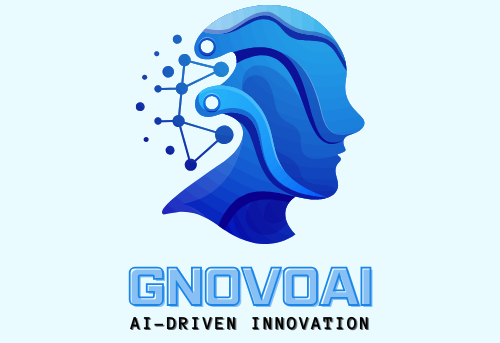🌟 Introduction: Why Optimizing Digital Marketing Channels Matters
In the digital age, success belongs to those who adapt. Optimizing digital marketing channels isn’t just a trend—it’s a necessity. Whether you’re a seasoned marketer or a solopreneur, unlocking the full potential of your online platforms can mean the difference between thriving and surviving.
So, how do you ensure your efforts aren’t lost in the noise? This guide breaks down 11 powerful, science-backed tips to help you boost visibility, increase conversions, and elevate your brand presence online. Let’s dive in. 💻📈
📌 Table of Contents
- Audit Your Current Marketing Channels 🔍
- Leverage the Power of SEO 🚀
- Personalize Email Marketing Campaigns 📬
- Invest in Social Media Strategy 📱
- Utilize Data Analytics Effectively 📊
- Improve Website Speed & UX ⚡
- Embrace Omnichannel Marketing 🎯
- Automate Where Possible 🤖
- Use Video Marketing Creatively 🎥
- A/B Test Everything 🔁
- Focus on Customer Journey Optimization 🧭
1. Audit Your Current Marketing Channels 🔍
You can’t improve what you don’t measure. Begin by auditing all active digital marketing channels:
- Evaluate performance: Use tools like Google Analytics, Hotjar, and SEMrush.
- Identify gaps in traffic, conversion rates, or audience engagement.
- Check content quality, branding consistency, and responsiveness across all platforms.
“Marketing without data is like driving with your eyes closed.” — Dan Zarrella
Pro Tip: Conduct a SWOT analysis (Strengths, Weaknesses, Opportunities, Threats) for each channel.
2. Leverage the Power of SEO 🚀
SEO remains a cornerstone of any digital marketing strategy.
- On-page SEO: Optimize headers, meta descriptions, and image alt texts.
- Off-page SEO: Build quality backlinks and citations.
- Technical SEO: Ensure site speed, mobile-friendliness, and secure protocols (HTTPS).
Use tools like Ahrefs, SEMrush, and Google Search Console to identify keywords and monitor performance.
3. Personalize Email Marketing Campaigns 📬
Generic newsletters are a thing of the past. Instead, use segmentation, behavioral triggers, and personalization:
- Segment your list based on actions, demographics, or past purchases.
- Personalize subject lines, offers, and CTAs.
- Use automation tools like Mailchimp, ConvertKit, or ActiveCampaign.
💡 People are 26% more likely to open emails with personalized subject lines.
4. Invest in Social Media Strategy 📱
Social media isn’t just for branding—it’s a full-fledged sales channel.
- Platform-specific strategies: LinkedIn for B2B, Instagram for visual branding, Twitter for trends.
- Schedule posts using Buffer or Hootsuite.
- Monitor engagement with Sprout Social or Meta Business Suite.
Emojis, hashtags, and short-form content like Reels and Shorts help capture micro-attention spans. 🎯
5. Utilize Data Analytics Effectively 📊
Data tells the story behind your customer’s journey.
- Set up Google Analytics 4 and connect it with Google Ads.
- Track KPIs like CTR, bounce rate, session time, and CAC (Customer Acquisition Cost).
- Use heatmaps and session recordings to optimize landing pages.
🔍 Actionable insight: Don’t just collect data—act on it.
6. Improve Website Speed & UX ⚡
A slow website is a dead-end.
- Compress images and implement lazy loading.
- Use CDNs (Content Delivery Networks) like Cloudflare.
- Ensure your design is mobile-first and navigation is intuitive.
🚀 Sites that load in under 2 seconds see up to 70% longer session durations.
7. Embrace Omnichannel Marketing 🎯
Be everywhere your audience is—consistently and cohesively.
- Align messaging across web, email, social, SMS, and apps.
- Ensure the customer experience is seamless across platforms.
- Track cross-channel performance in real-time.
Case Study: Brands using omnichannel strategies retain 89% of their customers on average.
8. Automate Where Possible 🤖
Automation saves time and reduces human error:
- Schedule posts, emails, and lead-nurturing flows.
- Use CRMs like HubSpot or Salesforce to track customer behavior.
- Automate repetitive tasks with Zapier or Make.com.
Tip: Automation works best when it feels human.
9. Use Video Marketing Creatively 🎥
Video content drives higher engagement across all digital platforms.
- Create explainer videos, tutorials, and testimonials.
- Repurpose blog content into short YouTube clips or Reels.
- Use tools like Lumen5 or In Video for easy editing.
🎥 88% of marketers report positive ROI from video marketing.
10. A/B Test Everything 🔁
From email subject lines to landing page headlines—test it all.
- Run A/B or multivariate tests for better results.
- Use Google Optimize or Optimizely.
- Optimize based on statistically significant results, not guesses.
Reminder: Small tweaks often lead to big results. 📊
11. Focus on Customer Journey Optimization 🧭
Map the full path from awareness to conversion:
- Understand pain points and remove friction.
- Build trust with testimonials, reviews, and live chat.
- Personalize the journey with dynamic content and retargeting.
🧭 A smooth journey = higher loyalty and lifetime value.
🙋♂️ FAQs: Optimizing Digital Marketing Channels
1. What’s the first step in optimizing my marketing strategy?
Start with a detailed channel audit and performance analysis.
2. How often should I update my SEO strategy?
At least every 3 to 6 months, to stay relevant with algorithm changes.
3. Which digital channel brings the highest ROI?
Email marketing and SEO consistently deliver high ROI.
4. Do I need to use all digital marketing channels?
No. Focus on where your target audience spends time.
5. Can automation hurt my personalization?
Not if done thoughtfully. Use behavioral triggers and dynamic content.
🎯 Conclusion: Elevate Every Channel
Optimizing digital marketing channels isn’t a one-time task—it’s a continuous process of improvement, testing, and innovation. From SEO and email to omnichannel strategy and video, every touchpoint matters.
Stay curious. Stay data-driven. And most importantly—stay human. 💡
💬 Have questions or tips of your own? Drop them in the comments!
